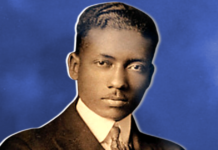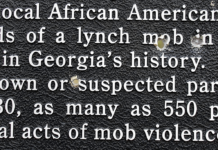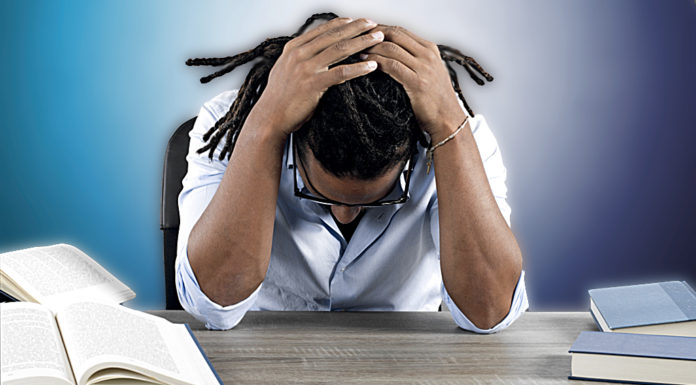When my wife and I moved to Crown Heights, it felt like a perfect choice. We had met in New York City almost fifteen years before, her occupying a studio apartment in Bed-Stuy, me packed in a 400 square foot three-bedroom apartment with a couple of college friends.
We shared a passion for the city, especially Brooklyn, even though we were both raised elsewhere. My personal love affair was heightened by my grandmother’s stories of her childhood in Brownsville and Crown Heights, a life bound by trials and treasures alike, running back and forth between her house on Bristol St and her dad’s butcher shop on Albany Ave. When my family moved into an old house, just two blocks from the street where my immigrant great-grandfather plied his trade, we felt both settled and joyful, having moved around for years, chasing careers and degrees.
Much of that joy evaporated last week, when the police murdered my neighbor, Saheed “Sy” Vassell.
Wednesday, on the 50th anniversary of the assassination of Dr. Martin Luther King, Jr., four police officers shot Sy, a black man who was unarmed, ten times, in broad daylight, on one of the busiest streets in our neighborhood. They approached him in an unmarked car, gave him less than five seconds to respond, then brutally ended his life, in front of his teenage son.

Sy’s family is enduring the worst kind of pain imaginable. And I can’t help but acknowledge that my presence, as a white resident of the community, contributed to his death.
While Americans tend to talk about racial integration and coexistence in aspirational, abstract terms, it’s hard to avoid the conclusion that an influx of new white residents takes a serious, and sometimes violent, toll on residents in black communities. These intersections between police violence and gentrification warrant much more discussion in our culture. Neighborhoods become gentrified – or, to be even more assertive, colonized – when new residents superimpose their interests and culture on a community, often in direct conflict with a neighborhood’s existing character. This process is usually oversimplified as a real estate phenomenon, wherein developers and investors plunder the housing stock of underserved communities, driving up prices in a way that enriches themselves, while making it impossible for existing residents to keep up with the escalating cost of living.
But the problem isn’t about real estate alone, as Sy’s death makes painfully clear. In years of studying these issues through both anecdote and analytical abstraction, it is clear that the most troubling part of gentrification is the effect that new white residents have on the way that neighborhoods are policed. There are countless stories in my neighborhood alone:
The neighbor who was stopped and frisked seven times in a single year, always during the short walk between the garage where he parked his car and his own apartment.
The woman who was stopped for a “biking violation,” while dozens of white people made the exact same transgression, within ten feet of her, at that exact same moment.
Out of context, these incidents paint a picture of painful discrimination. When we find out that Sy was executed, by the police, while walking down the street just a block from his home, it is clear that each event is part of an intentional program of violent suppression.

This over-policing of black bodies, by the state, is a direct consequence of the presence of white people, and our fucked up perceptions about what constitutes “safety.” So long as white people perceive the existence of black bodies as dangerous, the presence of white people will pose an existential threat to black lives.
I feel both rage and helplessness at this moment. Rage at the NYPD, whose homicidal use of force wreaks havoc on already underserved neighborhoods. Helplessness in the face of this sprawling, historical problem, despite the fact that I’ve spent extensive time considering and unpacking its ramifications. I’ve written advice for how white people should react to police shootings, suggested policy solutions to institutional racism, and helped to organize other white folks who are struggling to find a place in racial justice work. Building community across lines of difference has been an important part of my work at just about every stage of my life, but now that this has happened in my own neighborhood, on a street where I used to live in fact, I feel broken and lost, because while I knew that something like this would inevitably happen in my community, I also know that my presence played a role in creating the context for Sy’s death.
The price of proximity, in the case, was complicity.
And yet, the alternative to proximity is the passive continuation of both segregation and racism, which fosters even greater violence, hatred, and misunderstanding. White community members must commit ourselves fully to the process of realizing justice for Sy and his family, because the price of our white, progressive comfort right now is the blood of other people. The justice necessary in this moment will inevitably disrupt my life and my community, but the alternative is to choose a negative peace, which Dr. King correctly identified as the absence of justice. The pain ahead for my neighborhood will extend beyond Sy’s grieving family, and also to the many residents of color, who are justifiably angry at, and suspicious of, white newcomers.
I do not want my presence to exacerbate that pain, and I hope that I and the other white residents of this community find a way to act accordingly. Our commitment to building community across lines of difference has been inadequate to date. There are a few things that are critically important for white people to both understand and do, right now. First, folks should take serious time to understand the violent impact that aggressive policing has on black and brown people. The white community needs to redefine both its relationship with, and infatuation for, police. Every time you call the cops or 911, you are contributing to the escalation of violence against black bodies. While there are some instances that require professional intervention, the cases in which police can be useful are extremely limited, particularly relative to the range of issues for which they are called. Mental illness should not be a offense punishable by death, but it often is. People should never be brutalized for jaywalking, but every day they are. At this moment of community grief, find ways to solve problems that do not involve law enforcement. Equality for Flatbush and other local organizations have created resources, which are useful in identifying alternatives to calling 911. Other groups are working to organize healthy responses to chronic mental health issues, which should not require the use of violent force.
Beyond that, now is an important time to understand that Sy’s family is not alone, and he, unfortunately, will not be the last unarmed black man executed outside of due process by armed agents of the state. In the last two years, the NYPD has killed many other mentally ill neighbors of ours. New York still grieves the senseless killing of Eric Garner, whose death in 2014 sparked national protests and contributed to the genesis of the contemporary movement for black lives. Sy’s death also comes on the heels of the murder of Stephon Clark in Sacramento, which in concert with these other incidences contributes to the generations-long drumbeat of violence, perpetrated by the state against black men and women in America. These events are historical, and not happenstance. The victims are humans, not just hashtags.
Even if you haven’t realized it, the violence already extends into your community.
Violence begets violence, and the aggressive nature of American policing is inextricable from the broader issues of gun violence and institutional racism in our culture. Sy’s death is tragic. Our community’s grieving process has created a space for us to come together, across lines of difference, to both build community and address these issues. None of that work will happen, however, if white people remain willfully ignorant of the ways that our presence contributes to the violence.










